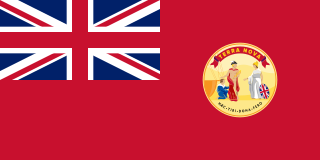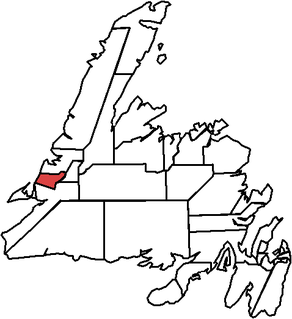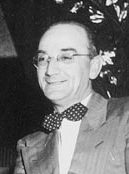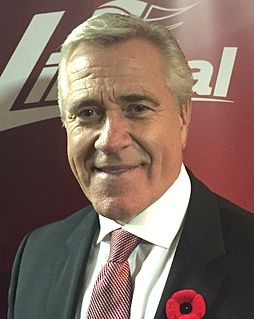| |||||||||||||||||||||||||||||
28 seats of the Newfoundland House of Assembly 15 seats were needed for a majority | |||||||||||||||||||||||||||||
|---|---|---|---|---|---|---|---|---|---|---|---|---|---|---|---|---|---|---|---|---|---|---|---|---|---|---|---|---|---|
| |||||||||||||||||||||||||||||
| |||||||||||||||||||||||||||||
The 30th Newfoundland general election was held on 27 May 1949 to elect members of the 29th General Assembly of Newfoundland. It was the first general election held since Newfoundland joined Canadian confederation on 31 March 1949 and the first Newfoundland-wide election of any kind since the suspension of responsible government and the creation of the Commission of Government in 1934. The election was won by the Liberal Party.

The members of the 29th General Assembly of Newfoundland were elected in the Newfoundland general election held in June 1949. The general assembly sat from July 11, 1949 to November 3, 1951. This was the first general election held in Newfoundland since the assembly was replaced by an appointed Commission of Government in 1934. Newfoundland had joined Canadian confederation in March 1949.

Newfoundland and Labrador is the most easterly province of Canada. Situated in the country's Atlantic region, it comprises the island of Newfoundland and mainland Labrador to the northwest, with a combined area of 405,212 square kilometres (156,500 sq mi). In 2018, the province's population was estimated at 525,073. About 92% of the province's population lives on the island of Newfoundland, of whom more than half live on the Avalon Peninsula.
Responsible government is a conception of a system of government that embodies the principle of parliamentary accountability, the foundation of the Westminster system of parliamentary democracy. Governments in Westminster democracies are responsible to parliament rather than to the monarch, or, in a colonial context, to the imperial government, and in a republican context, to the president, either in full or in part. If the parliament is bicameral, then the government is responsible first to the parliament's lower house, which is more representative than the upper house, as it has more members and they are always directly elected.
Joey Smallwood was invited to form an interim administration when Newfoundland became a part of Canada just before midnight on March 31, 1949. This interim Smallwood administration continued until the results of the May election.
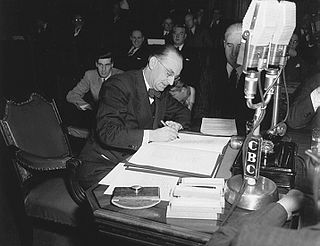
Joseph Roberts "Joey" Smallwood, was a Newfoundlander and Canadian politician. He was the main force who brought the dominion of Newfoundland into the Canadian Confederation in 1949, becoming the first premier of Newfoundland, serving until 1972. As premier, he vigorously promoted economic development, championed the welfare state, and emphasized modernization of education and transportation. Smallwood was a socialist in philosophy, noting in a 1974 documentary that he considered the People's Republic of China to be the ideal social state; he would nonetheless collaborate with bankers, turning against the militant unions that sponsored numerous strikes. The results of his efforts to promote industrialization were mixed, with the most favourable results in hydroelectricity, iron mining and paper mills.

Canada is a country in the northern part of North America. Its ten provinces and three territories extend from the Atlantic to the Pacific and northward into the Arctic Ocean, covering 9.98 million square kilometres, making it the world's second-largest country by total area. Canada's southern border with the United States, stretching some 8,891 kilometres (5,525 mi), is the world's longest bi-national land border. Its capital is Ottawa, and its three largest metropolitan areas are Toronto, Montreal, and Vancouver. As a whole, Canada is sparsely populated, the majority of its land area being dominated by forest and tundra. Consequently, its population is highly urbanized, with over 80 percent of its inhabitants concentrated in large and medium-sized cities, with 70% of citizens residing within 100 kilometres (62 mi) of the southern border. Canada's climate varies widely across its vast area, ranging from arctic weather in the north, to hot summers in the southern regions, with four distinct seasons.
The election was held under the House of Assembly Act of 1932, with the same 27 seats, plus a new seat for Labrador, though the election in the Labrador seat was deferred until July 25. The five seats where Progressive Conservatives won had all voted heavily against confederation in the 1948 Newfoundland referendums.
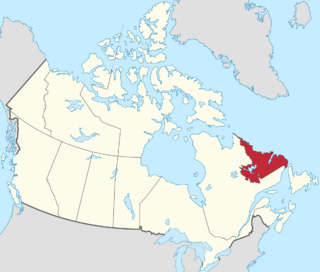
Labrador is a geographic and cultural region within the Canadian province of Newfoundland and Labrador. It comprises the mainland portion of the province, separated from the island of Newfoundland by the Strait of Belle Isle. It is the largest and northernmost geographical region in Atlantic Canada.



